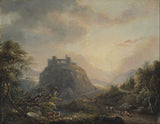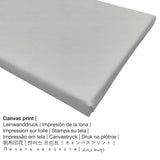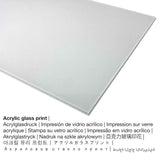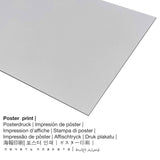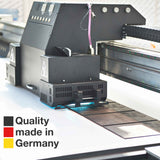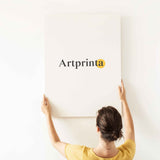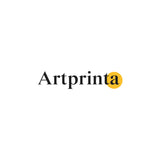Paul Sandby, 1808 - Okirikiri ala nwere nnukwu ụlọ - mbipụta nka mara mma
Ụtụ gụnyere. Mbupu gbakọrọ na ndenye ọpụpụ.
Banyere edemede a
The 19th narị afọ mpempe nka Landscape with a Castle bụ onye omenkà kere ya Paul Sandby in 1808. The 210 ụdị ọrụ nka nke afọ dị afọ na-atụ nha: Elu: 270 mm (10,62 ″); Ogologo: 340 mm (13,38 ″) na arụpụtara ya na Usoro mmanụ na kwaaji. N'oge a, a artwork bụ na nchịkọta nke Yale Center maka British Art in New Haven, Connecticut, United States of America. We are happy to state that this artpiece, which is part of the public domain is supplied with courtesy of Yale Center for British Art & Wikimedia Commons.The creditline of the artpiece is the following: . What is more, the alignment is in odida obodo format with an image ratio of 4 : 3, which implies that the length is 33% longer than the width. The artist, architect Paul Sandby was a European artist, whose artistic style was primarily Baroque. The European artist lived for 84 years and was born in 1725 in Nottingham, Nottingham, England, United Kingdom and deceased in 1809 in London, Greater London, England, United Kingdom.
Data ndabere gbasara ọrụ nka mbụ
| Aha eserese: | "Landscape with a Castle" |
| Nhazi nka: | sere |
| Nhazi nka: | nkà nke oge a |
| Nhazi oge: | 19th narị afọ |
| Emepụtara n'afọ: | 1808 |
| Ogologo afọ nka nka: | 210 afọ |
| Ọkara nke ihe osise izizi: | mmanụ na kwaaji |
| Nha izizi: | Elu: 270 mm (10,62 ″); Ogologo: 340 mm (13,38 ″) |
| Ụlọ ihe ngosi nka / ebe: | Yale Center maka British Art |
| Ebe ngosi nka: | New Haven, Connecticut, Njikota Obodo Amerika |
| website: | Yale Center maka British Art |
| Ụdị nka nka: | ngalaba ọha |
| Site n'aka: | Yale Center maka nka nka British na Wikimedia Commons |
metadata omenka ahaziri ahazi
| aha: | Paul Sandby |
| Aha nka ndị ọzọ: | Paul Sandby, Sanby Paul, Sandeby, P. Sandby, Sandby Paul, Mr. Sandby, Sanby, P. Sandby R.A., P. Sanby, Sandby, Paul Sanby, Sandbey, Paul Sandby R. A., P. Sandey |
| okike onye nka: | nwoke |
| Obodo onye nka: | British |
| Ọrụ nke onye na-ese ihe: | onye na-ese ụkpụrụ ụlọ, omenkà |
| Mba onye si: | United Kingdom |
| Otu nka: | omenkà nke oge a |
| styles: | Baroque |
| Akwụsị: | 84 afọ |
| Afọ amụrụ: | 1725 |
| Ebe amụrụ onye: | Nottingham, Nottingham, England, United Kingdom |
| Afọ ọnwụ: | 1809 |
| Nwụrụ na (ebe): | London, Greater London, England, United Kingdom |
Ngwa ngwaahịa ndị ahịa anyị nwere ike isi na ya were
The product dropdown list gives you the chance to pick your individual material and size. Pick your favorite size and material among the following options:
- Metal (aluminium debond mbipụta): An Aluminium Dibond print is a print with a true depth. The colors are luminous and bright, the details appear clear and crisp. The UV print on aluminium is the most popular entry-level product and is a truly contemporary way to showcase artworks, because it puts the viewer’s attention on the whole artwork.
- Kwaaji: A canvas print, not to be mistaken with a painting on a canvas, is a digital image printed onto canvas. It creates the special look of three dimensionality. Canvas Prints have the advantage of being low in weight, meaning that it is easy and straightforward to hang the Canvas print without the help of any wall-mounts. Because of thata canvas print is suitable for all types of walls.
- Mbipụta akwụkwọ mmado (ihe kwaaji): The poster is a printed canvas paper with a slightly roughened finish on the surface. It is qualified for framing the art print in a custom-made frame. Please bear in mind, that depending on the absolute size of the poster we add a white margin of something between 2-6cm around the artwork, which facilitates the framing with a custom frame.
- Bipụta na iko acrylic na-egbuke egbuke: The acrylic glass print, often referred to as a an art print on plexiglass, will transform your chosen artwork into décor. Additionally, the acrylic glass fine art print makes a viable alternative option to canvas or dibond prints. The acrylic glass protects your chosen fine art print against sunlight and external influences for several decades.
Ozi ihe ahaziri ahazi
| Ụdị ngwaahịa: | mmepụta nka |
| Mmeputakwa: | mmeputakwa n'ụdị dijitalụ |
| Production usoro: | mbipụta dijitalụ |
| Mmalite ngwaahịa: | arụpụtara na Germany |
| Stockdị ngwaahịa: | mmepụta ihe na-achọ |
| Ngwaahịa were: | ime ụlọ, ịchọ mma mgbidi |
| Nhazi nka nka: | nhazi odida obodo |
| Njikwa oyiyi: | ( Ogologo: obosara) 4: 3 |
| Nsonaazụ: | ogologo bụ 33% ogologo karịa obosara |
| Nhọrọ akụrụngwa: | Mbipụta kwaaji, mbipụta ọla (aluminium dibond), mbipụta akwụkwọ mmado (akwụkwọ kwaaji), mbipụta enyo acrylic (nwere ezigbo mkpuchi iko) |
| Mpempe akwa akwa (akwa akwa na etiti ihe ndọtị) nha: | 40x30cm - 16x12", 80x60cm - 31x24", 120x90cm - 47x35", 160x120cm - 63x47" |
| Mpempe iko acrylic (nwere ezigbo mkpuchi iko) nha dị iche iche: | 40x30cm - 16x12", 80x60cm - 31x24", 120x90cm - 47x35" |
| Nhọrọ nke mbipụta akwụkwọ mmado (akwụkwọ kwaaji): | 40x30cm - 16x12", 80x60cm - 31x24", 120x90cm - 47x35" |
| Ụdị nha ebipụta aluminom: | 40x30cm - 16x12", 80x60cm - 31x24", 120x90cm - 47x35" |
| Igwe onyonyo: | biko mara na mmeputakwa a enweghi etiti |
Ihe dị mkpa: We try whatever we can in order to describe the art products as accurately as possible and to exhibit them visually. Although, the pigments of the printing material, as well as the print result can differ slightly from the presentation on your device's screen. Depending on your settings of your screen and the condition of the surface, not all color pigments can be printed as realistically as the digital version depicted here. Bearing in mind that the art reproductions are printed and processed manually, there might also be minor variations in the exact position and the size of the motif.
© nwebisiinka, Artprinta.com (Artprinta)

